Select Language

Shares of Hyundai (OTC:HYMTF) Motor (KS:005380) rallied in Seoul trade on Tuesday after the South Korean carmaker, along with U.S. President Donald Trump, announced a $21 billion investment in the U.S.
Shares of the automaker jumped as much as 7.5% to 229,000 won, helping spur a 0.3% rise in the KOSPI index.
Hyundai said it will invest about $9 billion by 2028 to boost production capacity in the U.S. to 1.2 million vehicles, and $6 billion to expand partnerships with U.S. companies. Additionally, Hyundai Steel (KS:004020) will invest $5.8 billion to build a new plant in Louisiana that is projected to produce over 2.7 million metric tons of steel per year.
The move comes as Hyundai seeks to appease the Trump administration and potentially gain some relief from the 47th President’s plans for steep trade tariffs. The automaker’s investment in the U.S. is also in line with Trump’s agenda of bringing more businesses to the U.S.
Hyundai- the world’s third-largest automaker by sales- stands to be directly impacted by Trump’s proposed automobile tariffs, which would likely weigh on its U.S. sales. Trump’s planned reciprocal tariffs against South Korea will add to this impact.
But the company can duck Trump’s tariffs by increasing its U.S. production. Hyundai currently has two factories in the U.S.- in Alabama and Georgia- with a combined annual capacity of 1 million vehicles.
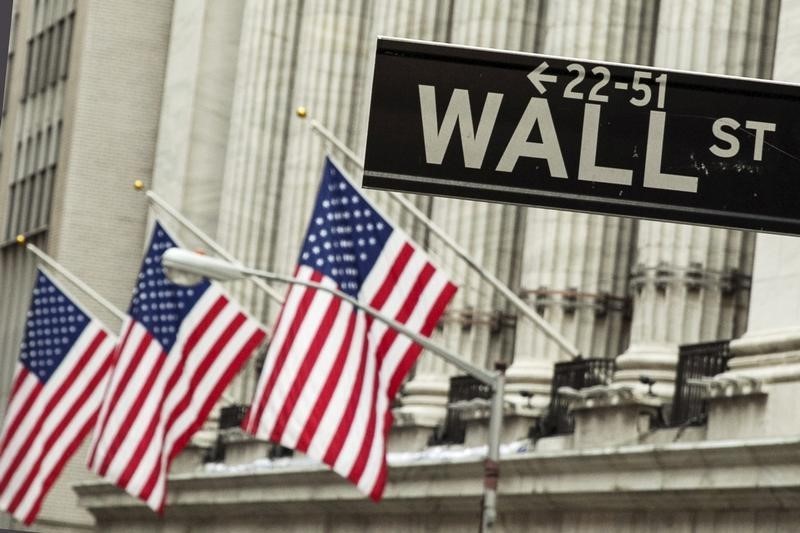
The S&P 500 closed sharply higher Monday, led by tech as sentiment was boosted by reports indicating that upcoming U.S. trade tariffs will be narrower and less strict than initially feared.
At 4:00 p.m. ET (20:00 GMT), the Dow Jones Industrial Average climbed 597 points, or 1.4%, the S&P 500 index rose 1.7%, and the NASDAQ Composite gained 2.3%.
Worries over the Trump administration’s tariffs have battered Wall Street in recent weeks, with the major indices slumping to six-month lows earlier this month as markets feared that the tariffs will increase inflation, disrupt global trade and dent economic growth.
U.S. reciprocal duties to be limited
However, reports from Bloomberg and the Wall Street Journal emerged over the weekend indicating that U.S. President Donald Trump will likely not impose sectoral tariffs next week, and that his plans for reciprocal tariffs will be limited to about 15 countries.
Trump has repeatedly touted April 2 as “liberation day” for the U.S., and while tariffs against major U.S. trading partners are still expected to weigh on the economy, their lessened scope offered investors some hope that the impact will be minimal.
"Targeted is obviously better than the alternative, but the trade changes being envisioned are still substantial, and it’s likely they will have negative effects on the economy and corporate profits, at least in the near and medium term," analysts at Vital Knowledge said in a note to clients.
Fedspeak, economic data on tap
Focus this week is on a slew of addresses by Federal Reserve officials for more cues on the U.S. economy, especially after the central bank last week signaled heightened uncertainty over Trump’s policies.
The Fed is widely expected to keep interest rates unchanged in the near-term, with sticky inflation also limiting the scope for rate cuts.
Beyond the Fed, purchasing managers index data for March is set to offer more cues on U.S. business activity. A revised reading on fourth-quarter gross domestic product data is also due this week, as is the personal consumption expenditures price index, an inflation metric closely followed by Federal Reserve policymakers.
In the corporate sector, earnings from discount retailer Dollar Tree (NASDAQ:DLTR) and up-market athletic clothier Lululemon (NASDAQ:LULU) are on the calendar.
Elsewhere, James Hardie Industries (NYSE:JHX) ADRs slumped 17% after the fiber-cement maker said it will acquire outdoor products manufacturer AZEK in a cash and stock deal valued at nearly $9 billion.
Gold Fields (NYSE:GFI) ADRs fell 5% after Australia’s Gold Road Resources rejected the $2.1 billion buyout bid from the gold miner because it believed the offer materially undervalued the company and was "highly opportunistic".
Tesla rallies; 23andMe bankruptcy filings; Nvidia
Tesla Inc (NASDAQ:TSLA) jumped 12% as investors bought the recent dip in the EV maker that has seen its shares decline for straight weeks. There were also reports that the EV’s maker’s showroom in Texas had been targeted with incendiary devices.
23Andme Holding Co (NASDAQ:ME) slumped 59% after the company filed for Chapter 11 bankruptcy protection.
NVIDIA Corporation (NASDAQ:NVDA), meanwhile, climbed 3% as the prospect of less harsher tariffs imposed by the Trump administration eased concerns about tariff-induced headwinds for the chipmaker.
(Peter Nurse, Ambar Warrick contribute to this article.)
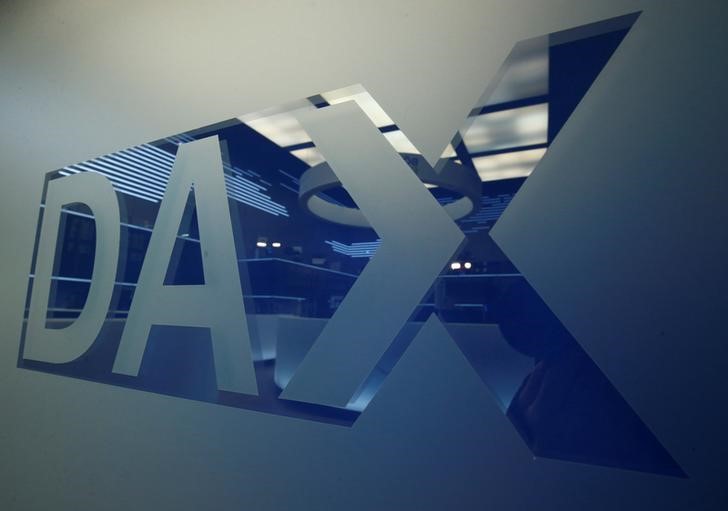
European stock markets rose Monday, starting the new week on a positive note as investors digest more Ukraine peace talks as well as the potential for less severe trade tariffs under U.S. President Donald Trump.
At 04:05 ET (08:05 GMT), the DAX index in Germany climbed 0.8%, the CAC 40 in France gained 0.8% and the FTSE 100 in the UK rose 0.4%.
Targeted trade tariffs
European equity indices have started the new week higher on reports that President Trump is planning a narrower, more targeted agenda for increased trade tariffs at the start of the new month.
Trump is now expected to not impose industry-specific tariffs next week, and will instead apply reciprocal duties only on a targeted set of countries that account for a bulk of the U.S.’ foreign trade, reports from both Bloomberg and the Wall Street Journal said, on Sunday.
Trump said on Friday that there could potentially be “flexibility” for his reciprocal tariff plan.
Fears of a global trade war have weighed heavily, with investors hung up on Trump’s proposed reciprocal tariffs on trading partner countries, which are scheduled to take effect on April 2.
Ukraine ceasefire progress?
Investors will also look to talks between a U.S. delegation and Russian officials in Saudi Arabia later Monday on the potential for a ceasefire in the war in Ukraine, after the U.S. delegation spoke with Ukrainian officials on Sunday.
U.S. special envoy Steve Witkoff expressed optimism on Sunday, saying he believed Russian President Vladimir Putin wanted to end the three-year-old conflict.
"I think that you’re going to see in Saudi Arabia on Monday some real progress, particularly as it affects a Black Sea ceasefire on ships between both countries. And from that, you’ll naturally gravitate into a full-on shooting ceasefire," Witkoff said.
Eurozone PMI data due
Elsewhere, investors will have a chance to study preliminary purchasing managers’ index data for most of Europe, providing a gauge of business activity in the region’s manufacturing and services sectors.
The European Central Bank cut its main interest rate to 2.5% from 2.75% earlier this month, and reduced its forecasts for economic growth in the eurozone.
Another rate cut in April is increasingly likely since inflation is slowing, wage growth is moderating and service price pressures are easing, Greek central bank chief Yannis Stournaras said on Friday.
Crude edges higher
Oil prices edged higher Monday, helped by fresh U.S. sanctions against Iran, adding to the potential for tighter supplies in the coming months.
At 04:05 ET, Brent crude futures rose 0.3% to $71.80 a barrel, and U.S. West Texas Intermediate crude climbed 0.3% to $68.51 a barrel.
Both benchmarks settled higher on Friday and recorded a second consecutive weekly gain, boosted by fresh U.S. sanctions on Iran and the latest output plan from the OPEC+ producer group, with seven of its member states set to cut output to make up for recent production increases.
Market sentiment toward oil prices has also been improved by some optimism that U.S. reciprocal tariffs may be less severe than feared.

By Anant Chandak
BENGALURU (Reuters) - Growth in India’s overall business activity softened in March as robust manufacturing expansion failed to offset a slowdown in the services sector, a private survey showed on Monday.
HSBC’s flash India Composite Purchasing Managers’ Index, compiled by S&P Global, slipped to 58.6 in March from February’s final reading of 58.8, lower than a Reuters poll’s median prediction of 59.0.
The 50-mark divides growth from contraction.
The manufacturing PMI index increased to 57.6 from 56.3, remaining in the expansion territory for more than three-and-a-half years.
But the dominant-services sector’s PMI index fell to 57.7 from 59.0 in February, contributing to the fall in the overall index.
"India’s manufacturing sector expanded at a faster pace in March ... The output index rose to its highest level since July 2024," noted Pranjul Bhandari, chief India economist at HSBC.
New orders - a key gauge for demand - and output, rose from last month, signaling better operating conditions for manufacturers. In contrast, new business in services eased as demand took a hit.
However, international demand for both manufacturing and services slowed, expanding at the slowest pace in three months.
"The moderation in new export orders growth was also noteworthy amid tariff announcements," added Bhandari.
U.S. President Donald Trump has imposed fresh tariffs on goods from China, Canada and Mexico and his constant flip-flops on trade has made the business outlook uncertain. More tariffs on U.S. trading partners are looming on April 2.
Indian businesses were less upbeat about future activity as sentiment for the coming year fell to a seven-month low, which also slowed the pace of hiring.
Input costs increased at a faster pace in March as goods producers recorded an acceleration to a three-month high.
"The margin squeeze on manufacturers intensified as input price inflation ticked up while factory gate prices rose at the weakest rate in a year," she said.
Businesses did not pass on higher input costs to clients and overall charge inflation rose at its weakest pace since February 2022.
India consumer inflation fell below the Reserve Bank of India (NSE:BOI)’s (RBI) medium-term 4% target in February for the first time in six months, raising the chances of another rate cut next month.
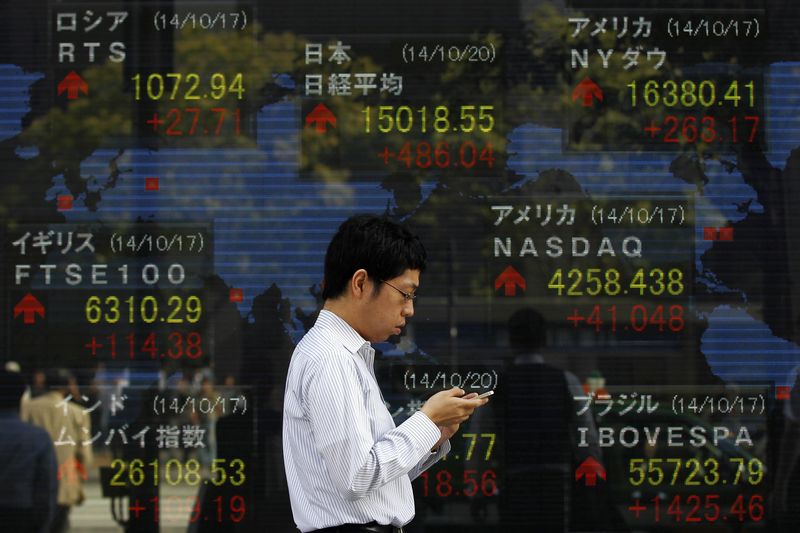
Most Asian stocks moved in a tight range on Monday as investors digested the prospect of less severe trade tariffs under U.S. President Donald Trump, while Japanese markets retreated on weak business activity readings.
Chinese markets reversed early losses on renewed optimism over the country’s artificial intelligence capabilities, after Bloomberg reported that Jack Ma-backed Ant Group used Chinese-made chips to develop new low-cost techniques for training AI models.
Broader regional markets kept to a tight range as investors gauged just how Trump’s trade tariffs will play out as an April 2 deadline approaches.
Media reports over the weekend showed Trump will not impose industry-specific tariffs on April 2 as previously threatened, and will limit his plans for reciprocal tariffs to about 15 countries which he sees as having major trade imbalances with Washington.
The report offered some relief to risk-averse markets, with Wall Street futures rising sharply in Asian trade.
But Asian markets were less enthused, given that a bulk of the 15 targeted countries lie within the region.
Japan stocks fall after weak March PMI
Japan’s Nikkei 225 index was flat, while the TOPIX shed 0.3% after purchasing managers index data contracted for the first time in five months in March.
Manufacturing PMI fell for a ninth straight month, while services shrank for the first time since mid-2024.
The weak print came as local exporters grappled with easing overseas demand amid tariff-related headwinds. Broader Japanese businesses were also pressured by soft spending and dwindling domestic demand.
The readings marked a weak end to the first quarter of 2025 for the Japanese economy, and raised some questions about just how much headroom the Bank of Japan will have to keep raising rates.
Chinese stocks reverse early losses on AI hype
China’s Shanghai Shenzhen CSI 300 rose 0.5%, while the Shanghai Composite index added 0.2%. Hong Kong’s Hang Seng was flat after sharply reversing early losses.
Chinese markets were nursing some losses from last week, as a rally so far in 2025- on optimism over more stimulus and Chinese AI competitiveness- gave way to some profit-taking.
But reports on Monday could potentially reignite this rally. Bloomberg reported that Ant Group had developed less costly techniques for training AI models using locally developed chips, highlighting the country’s growing independence in chip production after it was recently blacklisted by the U.S.
Ant used chips developed by Ma’s Alibaba (HK:9988) and Huawei Technologies, and achieved results similar to those seen with chips developed by NVIDIA Corporation (NASDAQ:NVDA), the report said.
Alibaba reversed early losses to trade up 0.5% in Hong Kong trade.
Broader Asian markets kept to a tight range. Australia’s ASX 200 moved little despite positive PMI data for March.
Singapore’s Straits Times index was flat, while South Korea’s KOSPI moved little in anticipation of heightened political turmoil in the country, as investors awaited a court ruling on impeached President Yun Suk Yeol.
Futures for India’s Nifty 50 index pointed to a flat open after the index marked strong gains last week.
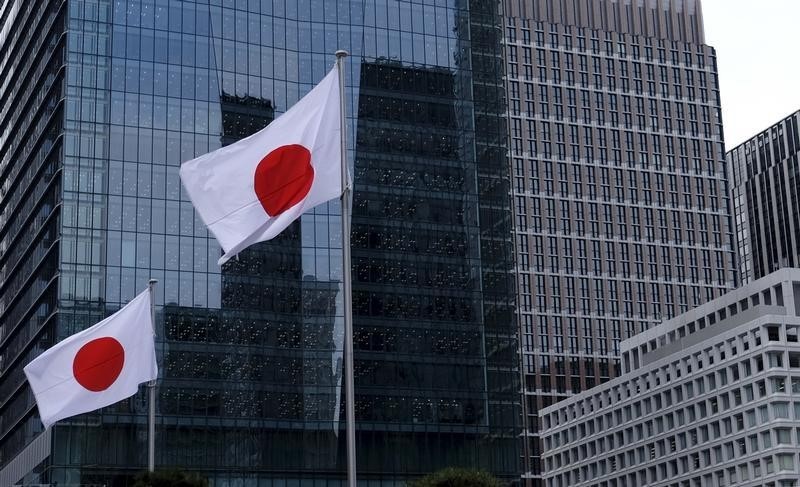
Japanese business activity shrank for the first time in five months in March, preliminary purchasing managers index data showed on Monday, as sticky local inflation and soft overseas manufacturing demand weighed.
The au Jibun Bank manufacturing PMI fell to 48.3 in March from 49.0 in February, shrinking for a ninth consecutive month. The reading was also weaker than expectations of 49.2.
A PMI print below 50 entails contraction.
The drop in manufacturing was driven chiefly by softer overseas demand for goods, which weighed on new work orders. This came as markets fretted over the economic impact of more trade tariffs under U.S. President Donald Trump.
Trump is set to unveil plans for reciprocal trade tariffs on April 2.
Japanese services activity shrank for the first time since mid-2024, with the au Jibun Bank services PMI falling to 49.5 in March from 53.7 in the prior month.
The decline in services activity was driven by waning demand in the face of heightened concerns over growing costs, especially as Japanese inflation remained strong and above the Bank of Japan’s target.
Higher inflation also pressured services demand in March, especially as average input costs rose sharply.
The declines in manufacturing and services activity saw the overall composite PMI fall to 48.5 in March from 52.0 in Feb- its first decline in five months.
The PMI data reflected some cooling in the Japanese economy, especially as private spending comes off last year’s highs. Rising domestic interest rates and sticky inflation have also weighed on business activity, as did uncertainty over U.S. trade policies.
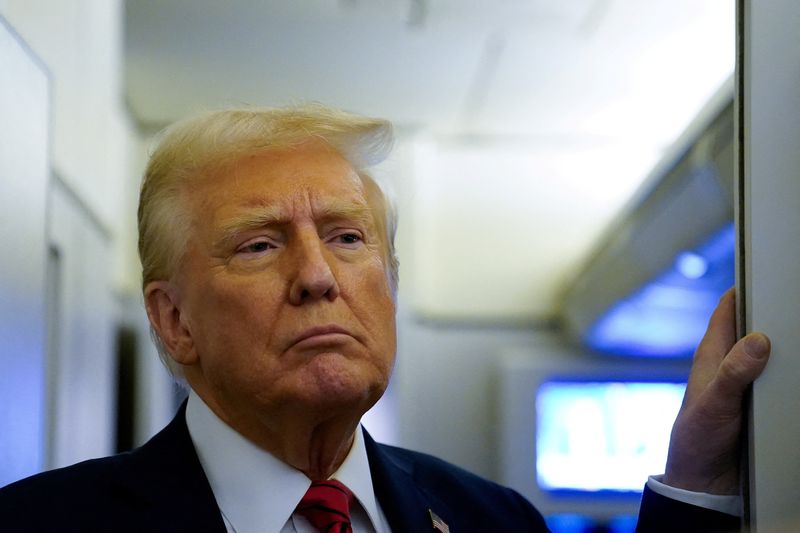
U.S. President Donald Trump is planning a narrower, more targeted agenda for increased trade tariffs set to take effect on April 2, reports from Bloomberg and the Wall Street Journal said on Sunday.
Trump is now expected to not impose industry-specific tariffs next week, and will instead apply reciprocal duties only on a targeted set of countries that account for a bulk of the U.S.’ foreign trade, the reports said.
Trump has repeatedly touted April 2 as his “liberation day” for the U.S., when he has threatened to impose tariffs against major U.S. trading partners in line with their duties on U.S. exports. He had earlier warned that key industries such as automobiles, pharmaceuticals, semiconductors and commodities will be targeted with more duties.
But this will no longer be the case, reports over the weekend showed, citing administration officials with knowledge of the matter.
The reports said it was now unclear whether Trump’s sectoral tariffs, along with higher duties on Canada and Mexico, will come to pass. Trump had earlier in March flip-flopped on tariffs against the two countries.
Trump’s reciprocal tariffs are also expected to be more targeted than initially thought, the reports showed. The WSJ reported that the White House is looking at applying tariffs on about 15% of nations with persistent trade balances with the U.S.- a so-called “dirty 15,” according to Treasury Secretary Scott Bessent.
Targeted nations are expected to include the G-20 nations, along with India, Japan, China, and Vietnam- all of which have large trade imbalances with the U.S.
While Trump’s tariffs will still ramp up the cost of importing in the U.S., their limitation to the so-called “dirty 15” is expected to dampen their overall economic disruption.
Each targeted nation will be imposed with tariffs based on their trading relationship with the U.S.
Concerns over disruptions stemming from Trump’s tariffs had ramped up in recent weeks, fueling fears of rising inflation and slowing economic growth. The U.S. President had earlier in March slapped China with a 20% trade tariff, drawing retaliation from Beijing.
Canada, Mexico, and the European Union also warned of retaliatory action against Trump’s tariffs.
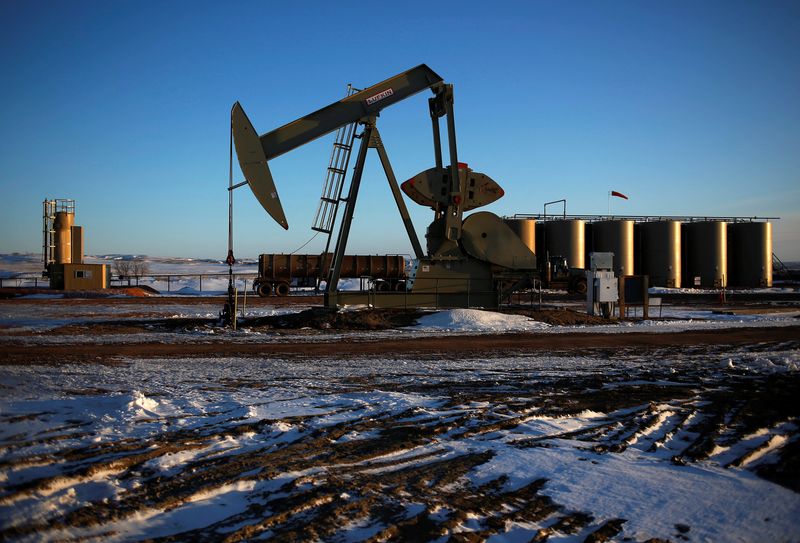
(Reuters) -Oil prices rose on Friday, and were set for second consecutive weekly gains, as fresh U.S. sanctions on Iran and a new plan from the Organization of Petroleum Exporting Countries and its allies (OPEC+) to cut output raised bets on tighter supply.
Brent crude futures climbed 21 cents, or 0.3%, to $72.21 per barrel by 0435 GMT. U.S. West Texas Intermediate crude futures were up 25 cents, or 0.4%, to $68.32 a barrel.
On a weekly basis, both Brent and WTI were on track to rise about 2%, their biggest weekly gains since the first week of 2025.
The United States Treasury on Thursday announced new Iran-related sanctions, which for the first time targeted an independent Chinese refiner among other entities and vessels involved in supplying Iranian crude oil to China.
The sanctions on Chinese entities were "a clear escalation in sanctions policy", analysts at RBC Capital Markets said in a note on Friday.
"While the physical implications are minimal, we think it reasonable that risk premium here is taken more seriously," they wrote.
That marked Washington’s fourth round of sanctions against Iran since U.S. President Donald Trump in February promised to reimpose a "maximum pressure" campaign on Tehran, pledging to drive the country’s oil exports to zero.
Analysts at ANZ Bank said they expect a 1 million barrels per day (bpd) reduction in Iranian crude oil exports because of tighter sanctions. Vessel tracking service Kpler pegged Iranian crude oil exports at over 1.8 million bpd in February.
Oil prices were also supported by a new OPEC+ plan announced Thursday for seven members to further cut output to make up for producing more than agreed levels. The plan would represent monthly cuts of between 189,000 bpd and 435,000 bpd, and will last until June 2026.
OPEC+ earlier this month confirmed that eight of its members would proceed with a monthly increase of 138,000 bpd from April, reversing some of the 5.85 million bpd of output cuts agreed in a series of steps since 2022 to support the market.
"While the group shares a plan for compensation cuts, it certainly doesn’t mean members will follow it. A handful of members have consistently produced above their target production levels," ING analysts said in a note on Friday.
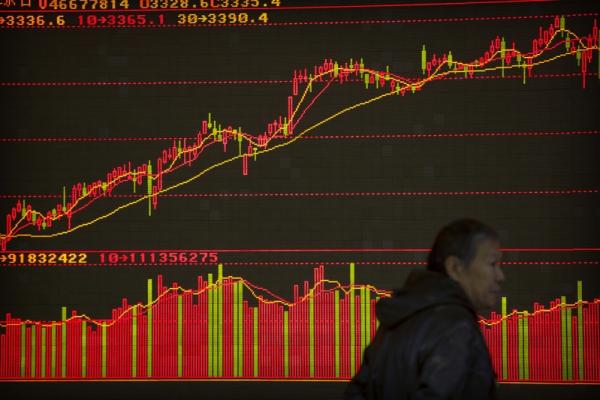
Most Asian stocks moved in a flat-to-low range on Friday as investors digested the outlook for higher U.S. trade tariffs and interest rates, while Chinese markets pulled back further from a stimulus-driven rally.
Japanese markets moved little in catch-up trade, as mildly stronger-than-expected consumer inflation data lifted the prospect of more interest rate hikes by the Bank of Japan.
Regional markets tracked a middling overnight session on Wall Street, as mixed signals from the Federal Reserve, persistent threats of more trade tariffs and growing concerns over a U.S. economic slowdown kept traders to the sidelines.
U.S. stock index futures rose slightly in Asian trade, as Wall Street still attracted some bargain buying after recently sliding to six-month lows. But investors remained largely on edge over more trade tariffs, with President Donald Trump recently signaling that his April 2 deadline for reciprocal tariffs remained.
Japanese shares drift higher after CPI data
Japan’s Nikkei 225 and TOPIX indexes rose 0.1% and 0.7%, respectively, on Friday. Trade resumed after a market holiday on Thursday.
Consumer price index inflation data read slightly higher than expected for February, furthering the BOJ’s expectations for a virtuous cycle and keeping bets of more rate hikes by the central bank squarely in focus.
While headline inflation did cool from the prior month, a key gauge of underlying inflation that is watched by the BOJ rose further above the central bank’s 2% annual target.
The print came just days after the BOJ kept rates unchanged, but signaled that it expected inflation to remain sticky this year. Analysts expect the BOJ to next hike rates in May, after a 25 basis point raise in January.
Chinese stocks fall further as stimulus, AI rally cools
China’s Shanghai Shenzhen CSI 300 and Shanghai Composite indexes fell 0.3% and 0.2%, respectively, while Hong Kong’s Hang Seng index sank 0.6%. All three indexes were hit with some profit-taking this week after a strong run-up so far this year, amid increasing optimism over more stimulus measures in the country. Chinese technology stocks, especially those listed in Hong Kong, benefited greatly from increased interest in China’s artificial intelligence capabilities.
This saw the Hang Seng hit hard by profit-taking after it soared to an over three-year high this week on strength in major tech stocks. These stocks were the biggest weight on the index on Thursday and Friday.
Focus is now on Beijing’s plans for more stimulus measures, after the government recently outlined measures aimed at boosting private consumption.
Broader Asian markets moved little amid a dearth of new cues, while caution over the global economy kept traders to the sidelines. Australia’s ASX 200 rose 0.4%.
Singapore’s Straits Times index fell 0.1%, while South Korea’s KOSPI added 0.2%.
Sentiment towards South Korea was pressured by anticipation of a ruling on impeached President Yun Suk Yeol, which has now been delayed by more than three weeks.
Futures for India’s Nifty 50 index pointed to a flat open, as a recent rebound to five-week highs now appeared to be cooling.
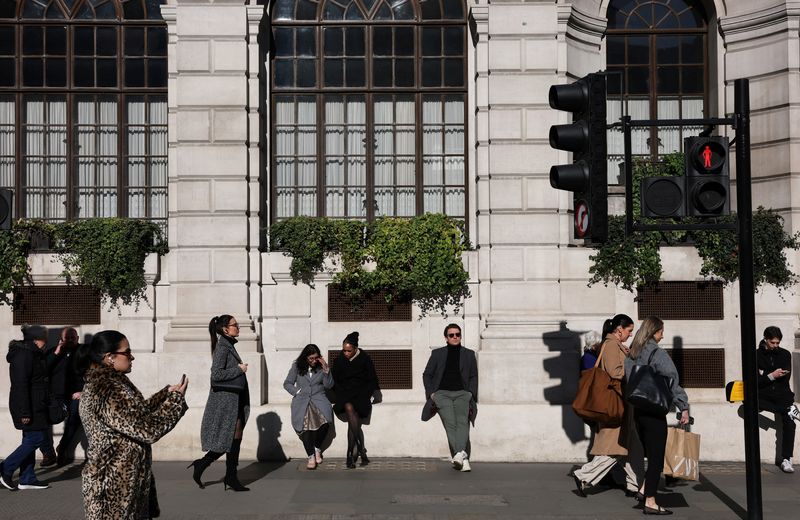
(Reuters) - British consumer morale ticked higher for a second month running in March as people turned a little more optimistic about the economic outlook, although less so over their own finances, a survey showed on Friday.
The GfK Consumer Confidence Index rose to -19 from -20, a three-month high but still below the survey’s long-run average of -10.
Its measure of how consumers view the economy over the next 12 months increased by two points to -29.
Overall the survey added to a run of mixed data for finance minister Rachel Reeves, who is likely to announce more spending cuts next week when she outlines new economic and budget forecasts.
Confidence among consumers and businesses slid last year after the new government of Prime Minister Keir Starmer said it had inherited a troubled economy and Reeves raised taxes on employers to fund higher public spending.
"The current stability is to be welcomed but it won’t take much to upset the fragile consumer mood," said Neil Bellamy, consumer insights director at GfK.
The poll of 2,005 Britons aged 16 and over took place between February 28 and March

